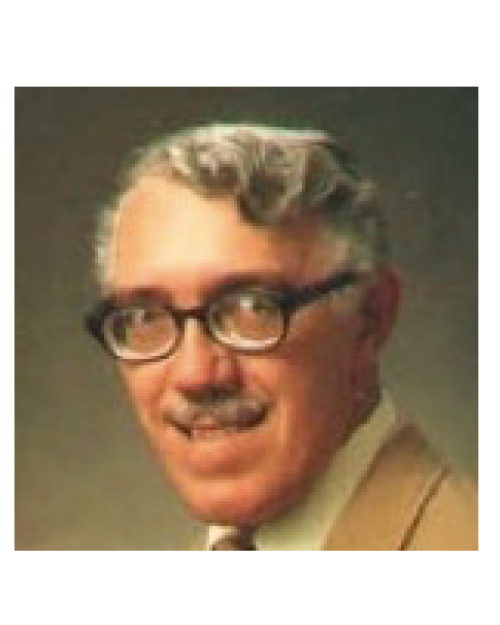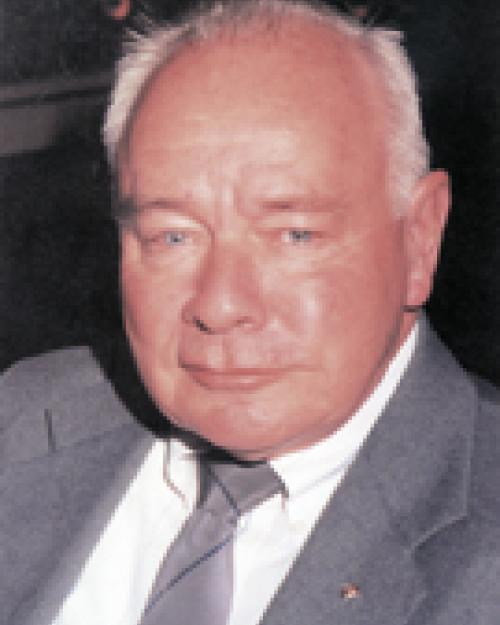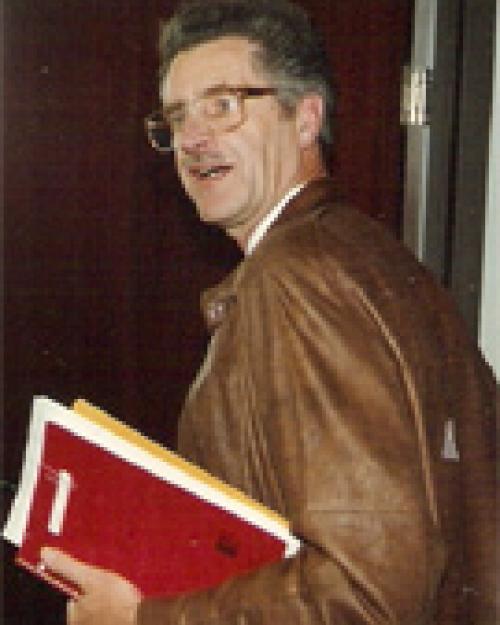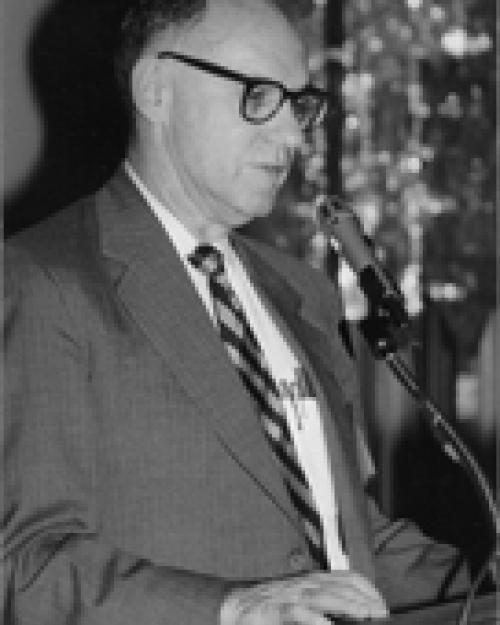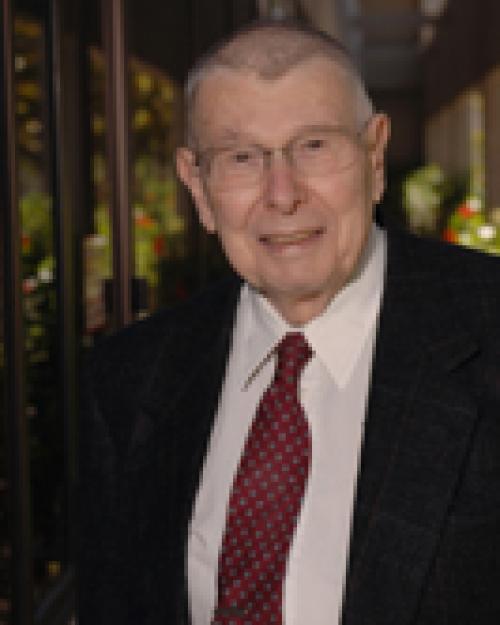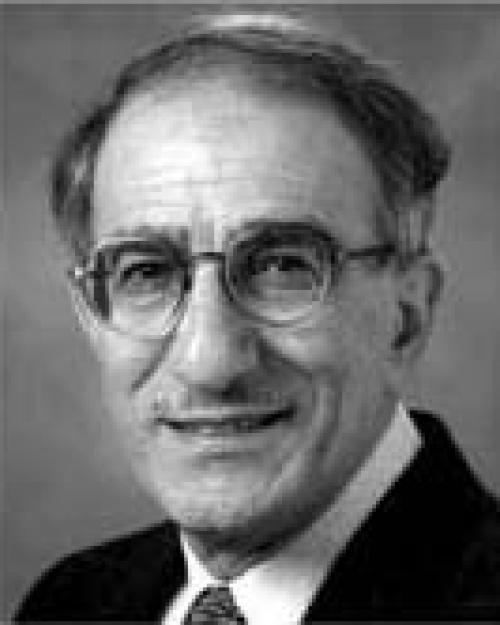-

Robert E. Newnham
-Robert Everest Newnham, (age 80) of State College, Pennsylvania, a resident of Foxdale Village, died at Hershey Medical Center on April 16, 2009. He was born March 28, 1929, in Amsterdam, New York, the son of the late William E. and Dorothy M. Hamm Newnham. On July 26, 1964, Bob married Patricia Friss Newnham, a nurse from E. Hartford, Connecticut, who survives. Bob and Pat had two children – a son, Randall E. Newnham of Reading, Pennsylvania, and a daughter – Rosemary E. Newnham of New York City. A graduate of four universities, Bob studied mathematics at Hartwick College (B.S., 1950), physics at Colorado State University (M.S., 1952), physics and mineralogy at Penn State (Ph.D., 1956) and crystallography at Cambridge University (Ph.D., 1960). Prior to joining the Penn State faculty in 1966, he was an I.C.I. Fellow at the Cavendish Laboratory of Cambridge University and taught in the Electrical Engineering Department of M.I.T. for 10 years. At Penn State, Bob taught courses on Crystal Physics, Crystal Chemistry, Electroceramics, Mineralogy, Gem Minerals, Biomaterials, X-ray Diffraction, and Crystal Structure Analysis. Widely known for his enthusiastic lectures and colorful illustrations, Bob was honored with the Outstanding Educator Award of the Ceramic Education Council, and the Wilson Teaching Prize of the College of Earth and Mineral Sciences. During his career, he delivered the Dow Lectures at Northwestern University, the Wolff Lecture at M.I.T., the McMahon Lecture at Alfred University, the Pond Lectures at Johns Hopkins, the Maddin Lecture at the University of Pennsylvania, and the Byron Short Lecture at the University of Texas. After retirement, Bob taught for two years at the Hong Kong Polytechnic University and the Georgia Institute of Technology. Professor Newnham was active in several professional societies serving as Editor of the Journal of the American Ceramic Society, Secretary of the Materials Research Society, President of the American Crystallographic Association, and Distinguished Lecturer for the Institute of Electrical and Electronic Engineers. Among his many Awards was the Jeppson Medal, the E.C. Henry Award, the Bleininger Award, the David Kingery Award of the American Ceramic Society, the third Millennium Medal and Ultrasonics Achievement Award of the IEEE, the Centennial Award of the Japan Ceramics Society, the Turnbull Lecturer Award of the Materials Research Society, the Adaptive Structures Prize of the American Society of Mechanical Engineers, the Benjamin Franklin Medal for Electrical Engineering from the Franklin Institute, and the Basic Research Award of the World Academy of Ceramics. A member of the National Academy of Engineering, Bob Newnham wrote five books, more that 500 research papers and 20 patents on electroceramics and composite materials for electronic and acoustic applications. The composite piezoelectric transducers developed in his laboratory revolutionized the quality of ultrasound images in cardiology, obstetrics, and underwater sonar. Every major ultrasonics manufacturer in the world including several in central Pennsylvania use composite transducers based on his designs. His miniature flextensional transducers for hydrophone towed arrays is one Penn State’s most successful patents. They are widely used in underwater oil explorations and geophysical research. During the past forty years, Bob and his long-time colleague Eric Cross, built up one of the largest ferroelectrics research programs in the world. Together they pioneered a number of new piezoelectric and electrostrictive materials for use as sensors, actuators, and capacitors. They were the first to carry out a complete classification of primary and secondary ferroics with examples of each. He retired from Penn State in 1999 as Alcoa Professor Emeritus after serving eight years as Associate Director of the Materials Research Laboratory and 18 years as Director of the Intercollege Program on Solid State Science.
Charles Stone
-Charles Stuart Stone, age 78, of Cedar Park, Texas, passed away at his home on March 10th, 2009. Charles was born in Austin, Texas, on February 11, 1931, to parents Dr. Wilson Stuart Stone and Julia Jean (Lampman) Stone. He was a graduate of the University of Texas at Austin School of Pure Mathematics. Mr. Stone founded the Brightline Company in Austin, Texas which, in 1984 was integrated into Frequency Electronic, Inc. Mitchel Filed, New York where he served as Vice President for Advanced Development. Mr. Stone, a life member of the IEEE was the 2005 recipient of the IEEE Cady Award for his outstanding contributions to State-Of-The-Art Low Noise Quartz Oscillators and Low Noise Circuits. He was the author of two major articles and many abstract papers presented at frequency and timing symposiums. Mr. Stone was awarded more than 14 patents for instrumentation and circuit designs which significantly contributed to advancements in low noise quartz oscillator performance. During the past two years, Mr. Stone concentrated on the advanced development of low-g sensitivity quartz oscillators and demonstrated sensitivity performance of better than 1E-11/g. Charles is survived by his wife, Judy and seven children; Dr. James Byron Stone and wife Sherry of Austin, Texas; Dr. Donald Stuart Stone of Madison, Wisconsin; William Henry Stone and wife Laura of Austin, Texas; Robert Gerald Cummins of Cedar Park, Texas; John Matthew Stone, of Buda, Texas, Julie Anne (Cummins) Chandler and husband David, of Escondido, California, and Jennifer Jean (Stone) Jordan and husband Jeffery of Austin, Texas, four grandchildren and two granddaughters.
William J. Tanski
-William J. Tanski, 67, of Glastonbury, CT, died at Saint Francis Hospital and Medical Center (Hartford, CT) on June 2, 2008. He was born on July 26, 1940, in Morristown, NJ, and had lived in Glastonbury since 1985. Bill received his BS degree in Electrical Engineering from The Pennsylvania State University, and his MS and PhD degrees in Physics from Georgetown University in 1970 and 1971, respectively. After serving in the US Navy as a nuclear reactor engineer, he began his career at the Sperry Research Center, in Sudbury, MA, in 1974. His early research work involved acoustic signal processing, and the development of VHF, UHF, and L-Band SAW resonator structures for a variety of oscillator and filter applications. After leaving Sperry, Bill worked at the Schlumberger-Doll Research Center in Ridgefield, CT, where he was involved in the development of SAW based pressure sensors. In 1985 he joined the United Technologies Research Center (UTRC) in East Hartford, CT, where he was engaged in the development of acoustic charge transport (ACT) and hetero-junction acoustic charge transport (HACT) device structures for signal processing and filtering applications. At UTRC he also continued his efforts to develop low noise SAW-based frequency sources for military applications. In recognition of his pioneering contributions to the development of SAW resonators, he was named an IEEE Fellow in 1992, with the following citation: “For developments in surface acoustic wave resonator devices”. During his career Bill was an active UFFC member, serving as a member of the Technical Program Committee for the Ultrasonics Symposium from 1980 to 1986, and also served as the UFFC Membership Chair for a number of years. Bill was an author of numerous technical publications during his career, as well as an inventor on many issued US patents. At the time of his death, he was working as an engineer for the United Technologies Otis Elevator subsidiary in Farmington, CT. Bill is survived by his wife Mary, and five sons.

Warren L. Smith
-Warren L. Smith, 84, of Allentown, PA passed away Tuesday, December 9, 2008, in Good Shepherd Speciality Hospital, Bethlehem, Pennsylvania. Born in Wayne, Nebraska, on July 6, 1924, he was the son of James Morrison Smith and Mattie (Meng) Smith. Warren made major contributions to both resonators and oscillators, as evidenced by his seminal papers and reports, including R. A. Sykes, W. L. Smith, and W. J. Spencer, “Studies on High Precision Resonators,” Proc. 17th Annual Symposium on Frequency Control, pp. 4-27, 1963, AD423381; R. E. Paradysz and W. L. Smith, “Crystal Controlled Oscillators for Radiation Environments,” Proc. 27th Ann. Symp. Frequency Control, pp. 120-123, AD-771042; “An Ultraprecise Standard of Frequency,” W. L. Smith, final report for U. S. Army contract DA 36-039 SC-73078, p. 13, 1 Dec. 1960, AD-253034; W. L. Smith and W. J. Spencer, “Quartz Crystal Controlled Oscillators,” Final Report, U.S. Army Contract DA36-039 SC-85373, Report No. 25335-H, 15 March 1963, AD-419717; and his reviews, chapter 8.1 on Bulk-Acoustic-Wave Oscillators, and chapter 8.3 on Quartz Frequency Standards and Clocks in the book, E. A. Gerber and A. Ballato, Precision Frequency Control, Vol. 2, pp. 45-98, Academic Press, 1985. He was raised in Yankton, South Dakota, and graduated from Yankton High School in 1942. After graduation, Smith entered Michigan College of Mining and Technology. During that year, he joined the Naval Reserve Officers Training Program and was assigned to the USNR training program at the University of Wisconsin, where he completed the work for a BSEE degree in 1945. Smith completed his midshipman training at Columbia University and was then assigned as an instructor at the Underway Training Center in San Diego until released to inactive duty. He returned to the University of Wisconsin for Doctoral work in Physics. Weeks before graduation, he was recalled to active duty in 1951 to serve aboard a navy destroyer in Korean waters. He was soon transferred to the Atomic Bomb Task Force headquartered in Washington, D.C., where he supervised a group of civilian scientists responsible for carrying out various experiments during two of the Pacific test operations on the Bikini Atoll in 1953 and 1954. Upon his honorable discharge, Smith joined the Bell Telephone Laboratories as a member of the technical staff in the Piezoelectric Department. In 1962, he was promoted to supervisor of the Precision Frequency and Selection Group responsible for the design and development of precision controlled oscillators and associated circuits, design of crystal filters, and the design and specification of quartz crystal resonators. Smith was the author of 17 articles. He was granted several United States and foreign patents. In 1968, Smith and William Spenser were awarded one of the IR-100 awards from the Industrial Research Magazine. He also received the C. B. Sawyer Award in 1975 for continuing contributions to the field of precision frequency control and selection. He was elected a Fellow of the Institute of Electrical and Electronic Engineers in 1973. The Electronic Industries Association named Smith the Quartz Devices “Man of the Year” in 1986 for outstanding service and many contributions to the industry. In 1971, Smith was appointed a US Delegate and Technical Advisor to Technical Commission 49 of the International Electro Technical Commission. He became chairman of Working Group 6 on Measurements and Working Group 7 concerned with crystal oscillators. He served on these commissions until 1990 and was the author of several standards publications and guide documents on behalf of the United Nations National Committee for the IEC. He retired in from Bell Laboratories in 1987. He continued to serve on the IEEE Standards Committee until 1994 and made significant contributions to work on piezoelectric crystals. Warren married Frances Dowd in 1948. They are the parents of five children, Marjory, Catherine, James, Jerry, and Janine. Warren has 11 grandchildren and 4 great-grandchildren and one brother, James.

Werner Weidemann
-Werner Weidemann was born in Germany in 1943. After receiving his engineering degree in electronics, he began his career with Rohde & Schwartz, Munich, working in their laboratory with quartz and rubidium vapor oscillator technologies. He joined Efratom GmbH, working with Ernst Jechart, its founder and inventor of the miniature rubidium vapor oscillator. In 1973, Werner, his boss Ernst, and Heinz Badura came to the USA to begin the Efratom California operation, leaving Ernst’s partner behind to run Efratom Munich. During his stay in the US, Werner made astonishing contributions to the world of precision time and frequency. First, he was instrumental in bringing his boss’s FRK Rb oscillator to a low cost, high performance unit, which became well known throughout the globe. Second, in the mid ‘70s, he was a principal team member in the development of the first production Rb oscillators used on the initial GPS satellites; accomplished in a teaming relationship with (then) Rockwell International. His contribution to GPS is noted in the ‘History of GPS’ article, GPS World magazine, June 2010 edition. Third, in the mid ‘80s, he designed the world’s smallest Rb oscillator, the FRS, which dominated the telecom market till the late ‘90s. He remained with Efratom through its transitions to Ball Aerospace and Datum Inc. Early 2000, Werner joined Odetics Telecom, which became FEI-Zyfer in 2003, where he supported various advancements in the commercial and military Rb oscillator technologies. In 2007, Werner was diagnosed with pancreatic cancer and passed away in October 2008. He will be sorely missed in the global precision time and frequency industry.

Robert Adler
-Robert Adler – Scientist, Engineer, Teacher, and Inventor 1913 – 2007 The ultrasonics community lost one of its most prolific inventors when Robert Adler passed away on 15 February 2007 in Boise, Idaho USA at the age of 93. His loss marks the culmination of an illustrious career spanning seven decades that led to pioneering contributions in vacuum tubes, ultrasonics, acoustooptical interactions, and surface acoustic waves and their applications to the electronics industry, consumer electronics, and communications equipment. Robert Adler was born in Vienna in 1913. After receiving his doctorate in physics in 1937 from the University of Vienna, Austria, he became engaged in patent work there, and later went to England. After the war broke out, he came to Chicago and worked first in the field of measuring instruments. He joined Zenith Radio Corporation in 1941. Ten years later he was made Associate Director of Research, Vice President in 1959, and Director of Research in 1963. In addition to his own research, in the thirty-seven years after he joined the research group at Zenith, he played an increasingly important role in forging one of the great industrial research teams in the U.S., at times numbering more than three hundred people. When economic exigencies compelled a drastic retrenching of this activity, rather than preside over it, Adler resigned his post in 1978. He became Vice President of Research of the Extel Corporation in Northbrook, Illinois until 1982. Always committed to the continuing education of engineers, Adler was also adjunct professor of electrical engineering at the University of Illinois at Urbana. Never one to actually retire, Dr. Adler remained a technical consultant primarily with Zenith, until 1999 when Zenith merged with LG Electronics Inc., and Elo TouchSystems. His early work was concentrated in new types of vacuum tubes, including the phasitron modulator used in early FM transmitters, receiving tubes for FM detection and color demodulation, transverse-field traveling wave tubes, and the electron beam parametric amplifier. His numerous contributions to ultrasonics technology include the first electromechanical IF filter and the development of ultrasonic remote control devices for television receivers which remained in use until about 1980 when infrared LEDs and phototransisters replaced ultrasound. He was active in the fields of acoustoopitcal interaction (light deflectors for image scanning), acoustic surface waves (filters and amplifiers) and the optical video disc. His recent work has largely been in the field of display devices and touch systems for displays employing surface acoustic waves. Dr. Adler developed the gated-beam tube which represented a new concept in receiving tubes. His noise-gated synch clipper and automatic gain control secured stability of television reception in the fringe areas. His contribution to low-noise traveling-wave tubes was important in military communications. Later he applied the new principle of parametric amplification to electron beams which was at the time the most sensitive practical amplifier for ultra high frequency (UHF) signals. It was used by radio astronomers in the United States and abroad. Electromechanical devices always interested Adler. During World War II he worked on high-frequency magnetostrictive oscillators. Remote control of television receivers by an ultrasonic gong grew out of this work. Interest in the interaction between light and ultrasound led to new ways of deflecting and modulating laser beams, using Bragg diffraction for television displays and in high-speed printing. Adler pioneered the use of surface acoustic waves in intermediate frequency filters for color television, a technology that has since become universal, not only in television but as an essential building block of cellular telephone handsets. Concurrently he devoted attention to optical video disc players. Dr. Adler also pioneered the use of surface acoustic wave (SAW) technology for touch screens. Since the early 1990s, as a consultant to Elo TouchSystems, he actively contributed to the commercialization and further innovation of his SAW touch screen invention. A prolific inventor with a seemingly never-ending thirst for knowledge, his pioneering developments spanned from the Golden Age of Television into the High-Definition Era, earning him more than 180 U.S. patents. The U.S. Patent and Trademark Office published his most recent patent application, for advances in touch-screen technology, on 1 February 2007. “Bob Adler was an unparalleled technical contributor, leader, adviser and teacher,” said Jerry K. Pearlman, retired Zenith chairman and CEO, who knew Dr. Adler for 35 years. “His gifts and passions were many, his mentoring matchless and his ego totally nonexistent.” In 1951, Dr. Adler became a Fellow of the Institute of Radio Engineers (now IEEE) “for his development of transmission and detection devices for frequency modulated signals and of electro-mechanical filter systems.” He received the IEEE Outstanding Technical Achievement Award in 1958 for his “original work on ultrasonic remote controls” for television, the Inventor of the Year award from George Washington University in 1967, the IEEE Outstanding Achievement Award in Consumer Electronics in 1970, the Outstanding Technical Paper Award from the Chicago Section of the IEEE in 1974 for his report on “An Optical Video Disc Player for NTSC Receivers,” representing early work in what was to become the digital video disc or DVD. He was the recipient of the IEEE Edison Medal in 1980 “For many inventions in the fields of electronic beam tubes and ultrasonic devices, and for leadership in innovative research and development.” In 1981, he received the IEEE Ultrasonics, Ferroelectrics, and Frequency Control Society Achievement Award for “insight, innovation, and leadership given to ultrasonics technology.” Together with Eugene Polley and other Zenith engineers, he was honored in 1997 by the National Academy of Television Arts and Sciences with an Emmy award for Zenith’s introduction of the first wireless TV remote controls 50 years ago. He was a charter inductee in the Consumer Electronics Hall of Fame in 2000. Also in 2000, Dr. Adler was inducted into the National Academy of Arts and Sciences Chicago/Midwest Chapter’s “Silver Circle,” which recognizes “outstanding individuals who have devoted a quarter of a century or more to the television industry and have made a significant contribution to Chicago broadcasting.” He is a fellow of the American Association for the Advancement of Science and a member of the National Academy of Engineering. A lover of the arts, Dr. Adler was active in the Chicago cultural community for decades, including the Art Institute of Chicago, the Chicago Symphony Orchestra, Masters of Baroque, and community theater. A world traveler for both business and pleasure, he was fluent in German, English and French. He was an active participant in a Chicago-area French Club for 35 years. One incident that is characteristic of Robert Adler. When sent to Moscow as a member of the IEEE delegation to the Popov Society Meeting in 1969, he learned Russian so that, as a goodwill gesture to his hosts, he could present his paper in their language. He was an avid reader. He loved his cats and laughter. He obtained his pilot license in the1950’s and was an enthusiastic flier. He was as passionate about hiking and skiing as he was about science and the arts. He was an avid downhill skier until age 89, and was still hiking in the past year. Robert Adler is survived by his wife Ingrid (nee Koch) Adler.[Editor’s Note: This biography was excerpted by Jan Brown from personal biographies written by Robert Adler over the years, two formal biographies written in 2000 and 2007 by John Taylor, LG Electronics USA, Inc., (Formerly, Zenith Electronics Corp.), the UFFC Archives, the IEEE History Center and a multitude of news stories found on the internet from all over the world.]
Peter Krempl
-Peter Krempl – Award Winning Researcher 1943 – 2006 Dr. Peter Krempl, recipient of the C.B. Sawyer award in 2003, and of the European Frequency and Time Award in 2005, passed away on November 2, 2006 at the age of 63. In addition to his other substantial achievements, Peter pioneered the research on the physical and electro-acoustical properties of Gallium Orthophosphate (GaPO4) crystals, and the development of industrial growth processes for large crystals including the epitaxial growth of GaPO4 on quartz. Peter has explored new applications for GaPO4 for frequency control and piezo-sensor applications. Peter received his Ph.D. in Physics from the University of Vienna, Austria, in 1975; was a fellow at CERN, Geneva (1973-1976); and was head of Physics Research at AVL List, Graz, Austria, since 1976. He received the venia docenti at the University of Graz in 1995. Peter has published more than 100 scientific papers and is holder of numerous patents. The frequency control community mourns the loss of an excellent scientist in our field.

Harry Tiersten
-Harry F. Tiersten – Renowned Theoretician on Piezoelectric Plate Vibrations 1930 – 2006 Prof. Harry Tiersten, a faculty member of the Renssaeler Polytechnic Institute (RPI) in the Department of Mechanical, Aerospace, and Nuclear Engineering passed away suddenly from a heart attack on June 12, 2006. Professor Tiersten was an unusual combination of an outstanding researcher, a gifted lecturer and teacher, and a strong source of guidance and inspiration for his graduate students. He is considered to be one of the founders of the macroscopic theories of continuum electrodynamics. He is the author of two technical books and of many research papers published in technical journals. Harry F. Tiersten was born in 1930 and grew up in the Far Rockaway section of Queens, New York City. He received a B.S. degree in civil engineering in 1952, and went on to earn M.S. and Ph. D. degrees in engineering mechanics in 1956 and 1961. All three degrees were awarded by Columbia University. At Columbia, his graduate study and doctoral dissertation were carried out under the guidance of Prof. Raymond Mindlin. His professional career was spent primarily at two illustrious institutions. From 1961 to 1967, he was a member of the Technical Staff at Bell Telephone Laboratories (now the Lucent Corp.) at two locations, first at Whippany NJ and later at Murray Hill NJ. From 1967 until his death, he served on the faculty of RPI. Dr. Tiersten had a distinguished and internationally recognized career. One of his early contributions after joining Bell Telephone Laboratories was to write the theoretical section of ANSI/IEEE Std 176-1978, “Standard on Piezoelectricity”. His first book “Linear Piezoelectric Plate Vibrations”, published in 1969 by Plenum Press, has been a major reference on the theory of piezoelectric vibrations ever since its publication. After his earlier contributions to the linear theory of piezoelectricity, Dr. Tiersten went on to develop the theory of nonlinear electroelasticity for large deformations and strong fields, the linear theory for infinitesimal fields superposed on large biasing fields, and the perturbation theory for frequency shifts in piezoelectric resonators. In the areas just mentioned, these theories continue to influence the work of present day researchers. His contributions also extend to theories for general nonlinear interactions of elastic deformations with electromagnetic fields in continuous media, including thermal effects and conduction or semiconduction. His distinctive point of view in this area of work is presented in his second book, completed late in his career, “A Development of the Equations of Electromagnetism in Material Continua”, published by Springer-Verlag in 1990. He was also highly regarded in the mechanics community internationally. He is considered to be one of the founders of the study of macroscopic theories of continuum electrodynamics. His style was exemplary of Mindlin’s school of applied mechanics researchers, ranging from fundamental theories to applications in technology. For example, Dr. Tiersten’s work on the sensitivity of resonator frequency to acceleration done in the 1980s is crucial to satellite systems in use today. During his career, Dr. Tiersten was the recipient of a number of honors and awards. He was a fellow of the Institute of Electrical and Electronic Engineers (IEEE), the Acoustical Society of America, and the American Society of Mechanical Engineers. He was a member of the American Physical Society and the Society of Engineering Science organizations. He was the recipient of the IEEE Ultrasonics, Ferroelectrics, and Frequency Control (UFFC) Society C. B. Sawyer award in 1979, “for contributions to the theory of piezoelectric resonators”. He received the IEEE UFFC Society’s Achievement Award in 1993 “for developing several rational theories for analyzing the electroelastic behavior in anisotropic crystals, including piezoelectric, nonlinear and energy-trapping effects for bulk and surface acoustic waves”. He was awarded the Fellow membership grade of the IEEE in 1995 with the citation “for contributions to the analysis of thickness-shear quartz resonators and surface acoustic wave devices”. Dr. Tiersten is survived by his wife of 53 years, Helen, and by a daughter, Linda, and a son, Steven. Prof. Tiersten will be remembered as a man of great character and intellectual ability, with honesty and integrity as his core values. He will be missed by all who knew him; but his family, his former students, and his many friends can take some consolation in the fact that the work he has created will have an impact on the field of continuum mechanics far into the future.

Leonard Cutler
-Leonard S. Cutler – Atomic Clock Scientist, Engineer and Innovator 1928 – 2006 The time and frequency community lost one of its most prominent members when Len Cutler passed away, at age 78, on September 4, 2006, while camping with his wife in Big Basin Redwoods State Park in California, USA. His loss marks the end of an illustrious career that led to pioneering contributions over the past forty-nine years in the field of ultra-precise timekeeping standards, devices, and measurement technologies. Len earned his BS (1958), MS (1960), and PHD (1966) in Physics from Stanford University while working at neighboring Hewlett-Packard Laboratories. Len’s early work at HP was concentrated on the development of oscillators and atomic frequency standards and clocks. The first atomic clock was invented in 1948. In the early 1960s, HP started a program to design a cesium clock for commercial purposes. In 1964, Cutler and his colleague Al Bagley succeeded inventing the HP5060A Cesium Beam Atomic Clock. This was the first all-solid-state cesium-beam chronometer, whose output frequency was soon adopted as the world time standard by the US National Institute of Standards and Technology and other scientific centers around the world. Cutler’s 1964 clock coordinated international time to within a microsecond, whereas previous efforts had pared accuracy down to only a millisecond. Cutler continued refining both the design and the constituent parts of cesium clocks, as well as research in quantum mechanics. His most recent triumph, in 1991, was the HP 5071A: at twice the accuracy of its predecessor, it remains the world’s most accurate commercial clock, losing about one second every 1.6 million years. HP 5071As also account for 82% of the data relied on to keep the International Atomic Time Standard (as of 2006). Len’s contributions to the development of commercial cesium standards culminated in the development of HP’s “super tube” which incorporated many innovations to sense and correct for the influence of environmental perturbations on the clock. After the spin-off of Agilent Technologies from HP, Len became a part of Agilent Laboratories, becoming its first (and only, as of Len’s death in 2006) Agilent Distinguished Fellow. In the last few years, Len had concentrated on the study and designs related to the chip scale atomic clock and as a general consultant to Agilent Laboratories.
Not surprisingly, Len had numerous patents for various atomic devices. But he also had other patents in such diverse fields as quartz oscillators and the two-frequency laser interferometer, which has become an essential element of integrated circuit manufacturing. Leonard S. Cutler was well known and respected in the US and abroad as an authority on atomic clocks, oscillators, and timekeeping. His many honors include election to IEEE Fellow in 1978 (“For contributions to the design of atomic frequency standards and to the theory and measurement of frequency stability”), the IEEE’s Morris E. Leeds Award and Centennial Award (1984), election to the National Academy of Engineering (1987),recipient of the American Institute of Physics’ Industrial Applications of Physics Award (1993), the IEEE Rabi Award (1989, For consistent technical and managerial contributions to the development of atomic cesium, rubidium and mercury ion frequency standards), and in 1990, Cutler became HP’s first Distinguished Contributor. He was elected a Fellow of the American Physical Society in 1996, and received the IEEE Third Millennium Medal in 2000. He served on the Technical Program Committee of the IEEE Frequency Control Symposium for 32 years (1974-2006).
Len is survived by his wife, Dorothy; four sons, Jeff, Greg, Steve and Scott; a brother, Fred; a sister, Anita Roth; and four grandchildren.
George A. Samara
-George Samara was an internationally recognized scientist for his pioneering work on structural phase transformations involving ferroelectric materials. Through his research studies, he became perhaps the world’s most accomplished scientist in the use of high pressure for fundamental studies of the dielectric and structural properties of such materials. Although George was born in southern Lebanon in 1936, his father was a United States citizen. He came to the United States as a sixteen-year-old and graduated from the University of Oklahoma; then he went to the University of Illinois at Urbana where he earned a doctorate in chemical engineering in 1962. This was under the direction of Professor Harry Drickamer, who was a hard task-master. His thesis work as well as continued collaborations with Drickamer covered a wide range of materials. These include pressure effects on the resistance of metalloids, simple fcc and bcc, II-VI, III-V compounds to more exotic fused-ring aromatics. This collaboration with Drickamer continued into the 1970s. Later other co-authors also enjoyed such long enduring relationships, several extending over two and three decades. Even though a list of co-authors exceeds 70, George was also the single author of nearly 100 papers. Upon completing his degree at Illinois in 1962, he joined Sandia National Laboratory, but immediately fulfilled his military duty spending the next two years as an ROTC officer [Commissioned Lieutenant] at the Institute of Exploratory Research for the U. S. Army Electronics Laboratory at Fort Monmouth, New Jersey. There he was able to continue research involving pressure effects on solids, including the pressure homogeneity of the sample in the pressure apparatus, and developed various techniques to measure the physical properties under pressure, such as compressibilities, electrical conductivities, dielectric constants, and Curie points. This effort was with Armando Giardini and others at Fort Monmouth. Also included was a paper in the area of what became of major importance to not only the entire world-wide research field, but also his personal research, as well as to Sandia- ferroelectrics. Returning to Sandia, George began and continued an active personal research effort up to the final days of his life. In fact he was investigating a promising new ferroelectric material when he passed away. George’s numerous scientific papers included pioneering work on structural phase transformations, semiconductor physics, ferroelectrics, ferroelectric polymers, nanosized semiconductor clusters, defects, deep electronic levels, relaxation in crystalline solids and polymers, ionic transport, ceramics, photovoltaics, and MBE and CVD synthesis and processing. Among the invited reviews are two chapters in Solid State Physics, “The Study of Soft Mode Transitions at High Pressure” with Paul Peercy and “High Pressure Studies of Ionic Conductivity in Solids”. Through this research effort, George became perhaps the world’s most accomplished scientist in the use of high pressure for fundamental studies of electronic and structural properties of solid state materials.
In high pressure science George was active in national and international organizations. He served as Vice President and Executive Committee of the International Association of High Pressure Science and Technology (AIRAPT); Chairman of the U. S. Department of Energy (DOE) Panel on High Pressure Science and Technology; Chairman 1974 Gordon Conference on Research at High Pressure; Co-Chair and Program Chairman of the 1993 Joint AIRAPT/American Physical Society Conference on High Pressure Science and Technology. George was awarded the Ipatieff Prize of the American Chemical Society. In 1986 he was elected to the [U.S.] National Academy of Engineering. He was a Fellow Member of the American Physical Society and the American Association for the Advancement of Science. His activities also included editorial or advisory boards on Ferroelectrics, Reviews of Scientific Instruments, and Journal of Physics and Chemistry of Solids.Those of us who were familiar with George’s unusually accomplished research career as well as his extraordinary organizational ability to develop a host of national and international materials research activities might also realize he possessed excellent management skills. At Sandia National Laboratory, he was initially promoted in 1967 and served in various management capacities involving oversight of research in condensed matter physics, electronic materials and phenomena, chemistry research activities, advanced materials and nanoscience. His interaction, insight and support of those and other collaborating scientists led to world-wide recognition of excellence for various individuals and groups. George had a unique combination of deep scientific understanding and insight, foresight, friendliness, and personal and organizational leadership abilities. He was widely recognized for his high professional, ethical, and scientific standards that have inspired all who had contact with him. In addition to overseeing management of these research activities, George took on additional management responsibilities. During the last thirteen years of his career, he served as Manager of Sandia Laboratories DOE Basic Energy Sciences Materials. He was largely responsible for developing the concept for the DOE Center of Excellence for the Synthesis and Processing of Advanced Materials, a coordinated, cooperative venture among twelve national laboratories and several industrial and university partners, and he served as its Director. In this effort, he earned the admiration and respect from his colleagues at the other national laboratories and the materials research community for his unbiased even-handed coordination and leadership. Based on his technical management and leadership George was awarded the American Chemical Society’s Earle B. Barnes Award for Leadership in Chemical Management in 2000. For amazing as his technical accomplishments were, George was much broader, a man for all seasons. In his younger days, he hiked the local New Mexico mountains as well as in the midrange of the Sierra Nevada in California. He was a respectful opponent in tennis. He visited Lebanon through the years; there he met and married his wife, Helen. Those that lived or visited Albuquerque enjoyed the Lebanese hospitality and food at their home. Fresh grapes, apricots, and particularly two varieties of figs were provided from his back yard. He enjoyed gardening, the arts, particularly music, and even wrote poetry for his church congregation. George was a gift to us all. He will be sorely missed.Pagination

